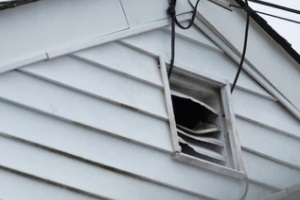 If you have heard unsettling sounds in the early evening or at dawn and wonder if something is living in your attic, you may have already done enough research and investigation to know that the culprit is a bat. If you have a bat in your attic, odds are that you have multiple; bats are social creatures that live in colonies.
If you have heard unsettling sounds in the early evening or at dawn and wonder if something is living in your attic, you may have already done enough research and investigation to know that the culprit is a bat. If you have a bat in your attic, odds are that you have multiple; bats are social creatures that live in colonies.
However, when it comes to handling a bat problem, many of the solutions that would work for other pests (like poisons) are either ineffective or not permitted; many areas restrict the methods that can be used to remove bats because they are beneficial to the ecosystem. If you are trying to remove a bat in your attic, consider the following steps.
Can I Just Leave The Bats Undisturbed?
Are the bats really hurting anything? If you have noticed a bat in your attic and wonder whether the effort to get it out is even worth it versus waiting for it to leave, it is important to know that bats can cause significant damage to your home. Their droppings (guano) are highly acidic and can cause severe structural damage over time. In addition, the smell of their urine and droppings is extremely pungent and can quickly make your house an unpleasant place to live. You should not ignore bats in your attic if you are aware that they roost there.
Determine If The Bats Have Pups
The first step to removing a bat that is stuck in your attic is to determine if it is alone. Most commonly, female bats especially like to nest in attics because it is warm and cave-like. They have pups any time from the middle of April into June, so if you have noticed a bat during this time, you will simply need to wait, since the pups cannot fly and the primary method of removing bats is by humanely guiding them out so that they fly away. At any other time of the year, you can likely begin your removal project.
Identify The Entry And Exit Points
In order to stop bats from using your home’s attic, you must determine where they are entering from. Bats can squeeze through remarkably small spaces for their apparent size, and even tiny tears in the mesh or screen (such as in windows) is sufficient to let them in. You will need to identify all entry points that are granting the bats access to your attic. If you are not sure where to start with this project, a professional can help you to locate the vulnerable points. Do not seal them at this stage. The bats will have no way to exit, and doing so may have legal penalties.
Use Exclusion Traps
Instead, place exclusion traps at each of the entry points. These types of devices will allow a bat to exit but will prevent them from reentering at that location. These come in a variety of forms, but most are simple to install using push pins or even duct tape and can be reused. This humane method allows the bats to evacuate slowly without any injuries or health issues.
Seal The Entry And Exit Points
 Once you are sure that all of the bats have left your attic, you are free to seal the entry and exit points after removing the exclusion traps. Be sure to comprehensively seal each space, or else your flying friends will be back in short order. How to seal these points will depend on where they are located; you may need to replace mesh screens or add drywall depending on the issue.
Once you are sure that all of the bats have left your attic, you are free to seal the entry and exit points after removing the exclusion traps. Be sure to comprehensively seal each space, or else your flying friends will be back in short order. How to seal these points will depend on where they are located; you may need to replace mesh screens or add drywall depending on the issue.
Clean Up The Mess
The bats have likely left a mess in your attic, and it is important that you thoroughly remove all of the guano and urine. If you miss any, it can begin to develop fungus that will infiltrate your home and cause respiratory issues. As you clean, be sure to use protective gear and a respirator device so that your lungs are safe from the acidic and acrid smell of their feces.
Trust The Experts To Remove Bats Humanely And Safely
If you believe that you have bats in your attic, you do not need to tackle the removal process on your own. The experts at Spartan Animal and Pest Control would be happy to help you identify vulnerabilities that the bats are using to enter. We can safely encourage the bats to leave humanely and then seal these entry points so that your bat problem does not reoccur, in addition to cleaning your attic afterward. Reach out to schedule an appointment to discuss the problem that you are facing.



